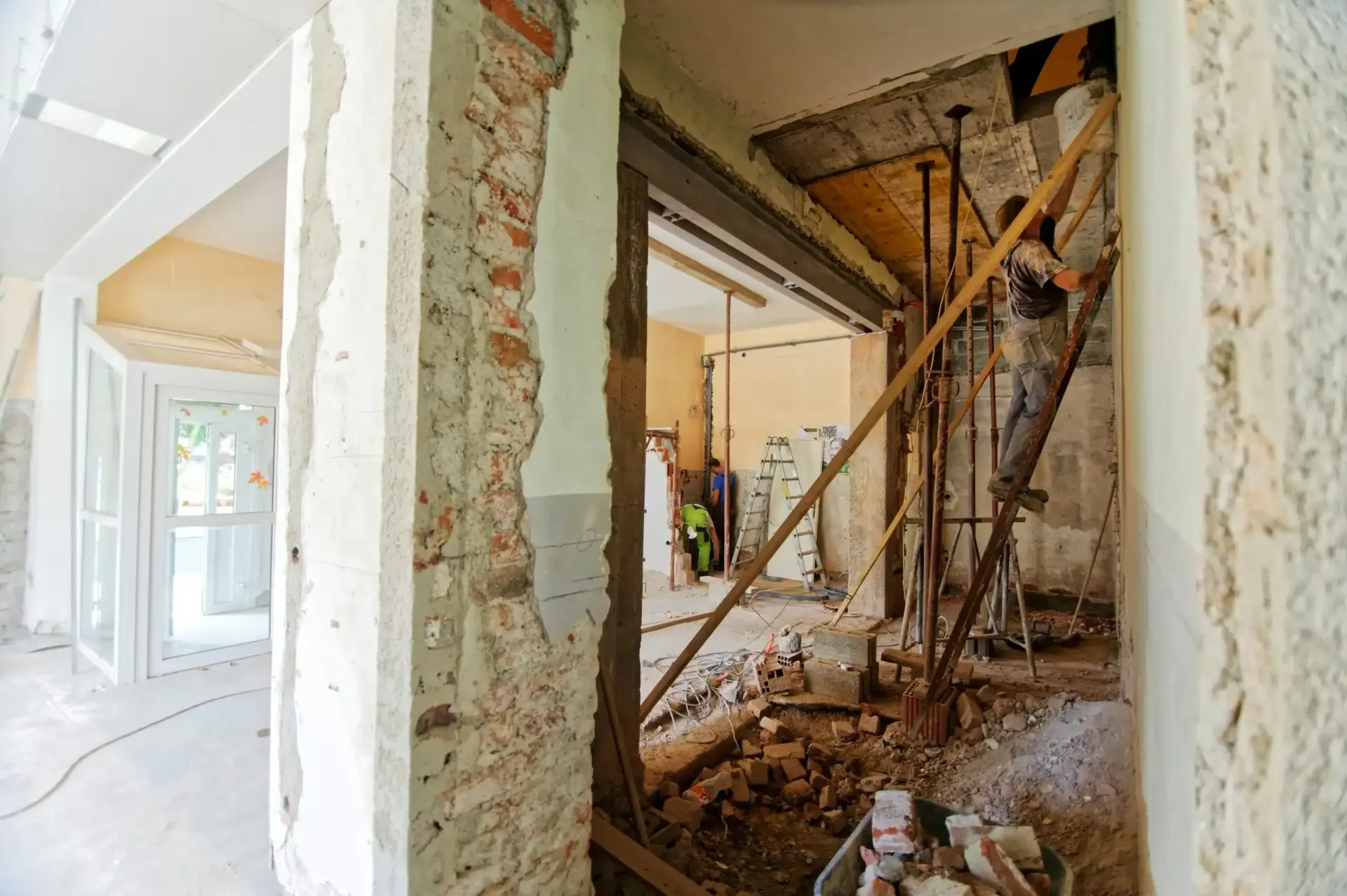Avoid These Common Home Remodeling Mistakes

Embarking on a home improvement journey can be exciting, whether you’re planning a bathroom upgrade or a kitchen remodel. It’s an opportunity to increase your home’s value and appeal. However, this process can easily result in costly mistakes without the right approach.
In this article, we’ll explore common renovation pitfalls to avoid and offer expert tips on selecting the right subcontractor to ensure a successful project. Read on to turn potential challenges into smooth and rewarding home transformations.
Key Takeaways
- Plan renovations carefully by living in the space first and considering long-term functionality, rather than rushing into aesthetic changes.
- Budget realistically, including a contingency fund for unexpected costs, and always obtain multiple professional estimates to avoid financial surprises.
- Prioritize structural needs and obtain necessary permits before focusing on aesthetics to prevent costly revisions or legal issues.
- Hire a contractor who is a good fit by reviewing their portfolio, conducting interviews, and setting clear expectations to ensure your vision aligns with their work.
- Effective communication with contractors and professionals is essential for avoiding delays, managing costs, and ensuring a successful renovation.
Starting Renovations Too Soon

Excitement can often push homeowners to start remodeling projects without proper planning. Jumping into a kitchen renovation or redesign right after purchasing a property may seem tempting, but it can lead to overlooked details. Living in the space first helps understand its flow, potentially preventing costly mistakes.
Structural needs should always take priority over aesthetic changes, and thinking about how each space will function in the future ensures long-lasting results. Without this foresight, homeowners may face unexpected adjustments that are not covered by the original budget or insurance.
Failing to Live in the Space First
Assessing the floor plan during the early occupancy phase helps homeowners make modifications that better align with their lifestyle. An electrician can advise on optimal outlet placement and lighting, while interior discussions might reveal the importance of color and additional storage.
Without understanding the space’s nuances, rushing into changes can lead to impractical decisions, leaving homeowners with a space that doesn’t fully meet their needs.
Overlooking Structural Needs
Professional advice can provide valuable insights into critical structural issues that shouldn’t be overlooked during in-home renovation. While DIY projects may seem appealing, essential concerns like foundational integrity, load-bearing walls, and the roof’s condition can easily be missed. Clear communication with contractors is crucial to uncover hidden problems, such as mold odors or unstable fixtures, that may indicate deeper structural concerns.
Preparation is essential for a successful renovation. Start by consulting professionals to address any structural repairs before focusing on cosmetic updates. Stepping back from DIY enthusiasm allows homeowners to assess the home’s fundamental needs, ensuring key issues are identified and resolved through clear communication with contractors.
Not Considering Long-Term Usage
Consulting with a real estate agent can emphasize the importance of future planning in home renovations. Remodeling a bedroom without considering future needs may result in additional costs later, especially if the room will need to serve different functions. Overlooking factors like ventilation can also increase expenses, as retrofitting a space for proper airflow can become a significant and costly task if not addressed early in the planning process.
| Renovation Aspect | Short-Term View | Long-Term Consideration |
|---|---|---|
| Bedroom Design | Immediate Aesthetic Appeal | Adaptability for Future Use |
| Structural Changes | Current Trend Alignment | Enduring Quality and Function |
| Ventilation | Basic Requirements | Energy Efficiency and Enhanced Comfort |
| Remodeling Budget | Initial Cost | Long-Term Savings and Value |
Underestimating Costs

One of the most common mistakes in home renovations is underestimating the financial aspect, especially in areas like the basement that may conceal hidden issues requiring urgent attention. Failing to allocate enough funds for potential setbacks, such as energy inefficiencies or structural concerns, can lead to unexpected cost increases.
Homeowners often overlook the importance of setting aside a contingency fund for these surprises, exposing their budgets. Skipping professional estimates can also result in inaccurate financial planning, underscoring the need for thorough preparation and expert guidance to avoid financial pitfalls.
Ignoring Hidden Expenses
Many homeowners, eager to personalize their new homes, often overlook how renovations might affect their mortgage. Common mistakes, like underestimating the cost of a new roof or overlooking local building codes, can derail a project. These oversights can reduce the return on investment, strain budgets, and cause unnecessary delays.
Not Setting Aside a Contingency Fund
Homeowners often envision upgrades like a new floor or a sleek sink to enhance their kitchen. However, unexpected costs such as paint touch-ups or foundational repairs can quickly escalate without a proper financial buffer. Thorough research into material and labor costs and setting aside a contingency fund help protect against financial surprises during a remodel. Preparing for potential plumbing issues when installing new sinks or appliances can also prevent budget overruns.
Skipping Professional Estimates
While requesting a flat rate from a contractor may seem straightforward, working with skilled estimators provides homeowners with more precise financial expectations. Whether planning a complete interior overhaul or a bathroom remodel, getting multiple professional estimates is smart. It ensures a clear understanding of the project’s scope and helps prevent unexpected costs that could strain the budget.
Expecting Everything to Go According to Plan

One of the most common mistakes in home renovations is underestimating costs, particularly in areas like basements, where hidden issues may arise. Costs can quickly escalate without enough funds for unexpected setbacks, such as energy inefficiencies or structural concerns. Homeowners often neglect to set aside a contingency fund, leaving their budget vulnerable.
Additionally, skipping professional estimates can lead to inaccurate financial planning, so thorough preparation and expert advice are crucial to avoiding these financial pitfalls. Costs can quickly escalate without enough funds for unexpected setbacks, such as energy inefficiencies or structural concerns
Not Planning for Delays
Renovations often face delays due to supplier issues, crew availability, and unexpected structural surprises. Homeowners who don’t account for these potential setbacks in their timeline may frequently check for updates from designers or construction teams. Failing to anticipate these hiccups can turn an exciting project into a recurring source of frustration.
| Delay Factor | Potential Cause | Impact on Renovation |
|---|---|---|
| Supplier Issues | Backordered materials | Progress halted, extended timelines |
| Crew Availability | Overbook schedules | Interruptions in workflow, increased costs |
| Structural Surprises | Undiscovered repairs needed | Additional work, budget strain |
Forgetting to Prioritize Tasks
The order of tasks in a remodel can significantly impact the project’s success. Homeowners may mistakenly prioritize aesthetic decisions, like choosing a light fixture, over essential checks, such as assessing the structural integrity of brickwork, leading to costly revisions.
Experienced contractors recommend following a clear sequence of steps to prevent complications and ensure a smooth renovation process.
Overlooking the Need for Permits
The excitement of choosing new furniture or envisioning a sparkling swimming pool can often overshadow the essential task of obtaining permits. Skipping this critical step can bring a kitchen renovation or any other home improvement to a sudden halt, leaving the project non-compliant with local regulations. Without the proper permits, homeowners risk fines and costly corrective work, jeopardizing the success of their remodel.
Not Hiring a Designer From the Start

It’s tempting for homeowners to rely on instinct rather than consulting a designer when planning a room’s layout and aesthetics. However, this can result in spatial mismatches that a seasoned designer could anticipate and avoid.
Like a financial advisor evaluates investments, a designer assesses space to balance function and style. Functionality doesn’t have to come at the expense of style, but many homeowners forget to integrate the two, resulting in rooms that look great but lack practicality.
From choosing the right furniture size to selecting the perfect carpet, professional guidance from the start of a renovation can save time and money and create a space that reflects both the homeowner’s needs and taste.
Disregarding Professional Advice
In-home remodeling projects, such as kitchen renovations, homeowners may sometimes overlook a contractor’s recommendations. This can be risky, especially when installing appliances like washing machines, where technical advice ensures proper operation and longevity. A general contractor coordinates all stages of the renovation, ensuring each step aligns with the next, helping to prevent costly and avoidable mistakes.
| Renovation Stage | Contractor's Advice | Homeowner Action Without Advice |
|---|---|---|
| Appliance installation | Suggest the best location for efficiency | Potential for water damage or electrical issues |
| Workflow Coordination | Streamline tasks for a seamless process | Missed steps leading to delays and rework |
| Material Selection | Recommend durable options for longevity | Premature wear and need for replacement |
Misjudging Spatial Planning
Homeowners often underestimate the importance of proper lighting when planning renovations. This oversight can result in impractical placement of fixtures, like a stove, disrupting the flow of the space. Thoughtful spatial design is essential in home renovations, ensuring the final result is both beautiful and functional.
Forgetting Functional Aesthetics
When starting a home renovation, overlooking functional aesthetics can undermine the investment. Choosing a beautiful tile without considering its price and durability can lead to expensive future replacements. Similarly, installing attractive fixtures without accounting for plumbing needs can result in impractical renovations that may not last.
Hiring a Professional, That’s Not a Good Fit

Choosing the right professional for a home renovation is just as important as selecting the right materials. Skipping key steps, such as reviewing a contractor’s previous work, can result in dissatisfaction with the final product.
The journey matters as much as the outcome. Without a thorough interview process, homeowners risk hiring someone who may not fully grasp their vision or have the necessary experience. Setting clear expectations from the beginning is crucial to avoid surprises later on.
To ensure a successful renovation, homeowners must carefully vet the contractor’s portfolio, conduct detailed interviews, and establish clear expectations upfront.
Not Checking Portfolios
Homeowners often overlook the importance of reviewing a contractor’s portfolio before starting a renovation project. A contractor’s previous work showcases their capabilities and style, helping homeowners set realistic expectations. Skipping this step can lead to a finished space that doesn’t align with their vision, making the time and financial investment feel disappointing.
| Renovation Expectation | Without Portfolio Review | With Portfolio Review |
|---|---|---|
| Quality of Work | Potential disappointment | Confidence in expected outcomes |
| Design Compatibility | Risk of style mismatch | Assurance of stylistic alignment |
| Professional Expertise | Uncertainty in skills | Verified capabilities |
Skipping the Interview Process
Skipping an in-depth conversation with a potential contractor is a common mistake. This interview is a crucial opportunity for homeowners to assess the contractor’s understanding of the project, work ethic, and communication skills. A successful renovation starts with choosing the right team and ensuring the final result aligns with the homeowner’s vision.
Forgetting to Clarify Expectations
A renovation project can easily go off track if homeowners don’t establish clear goals and outcomes with their hired professionals. Having clear conversations about expectations helps prevent misunderstandings that could lead to a finished renovation that misses the mark, causing frustration and potentially requiring costly rework.
Conclusion
Home renovations often have potential pitfalls, such as starting projects before fully understanding the space or underestimating long-term costs. Failing to account for hidden expenses, disregarding professional advice, or overlooking potential delays can derail a project.
Choosing the lowest bid or skipping contractor vetting can lead to poor quality and unmet expectations.
These setbacks highlight the need for thorough planning, clear communication, and prioritizing structural integrity over aesthetics to ensure a successful and satisfying renovation.






Share On: